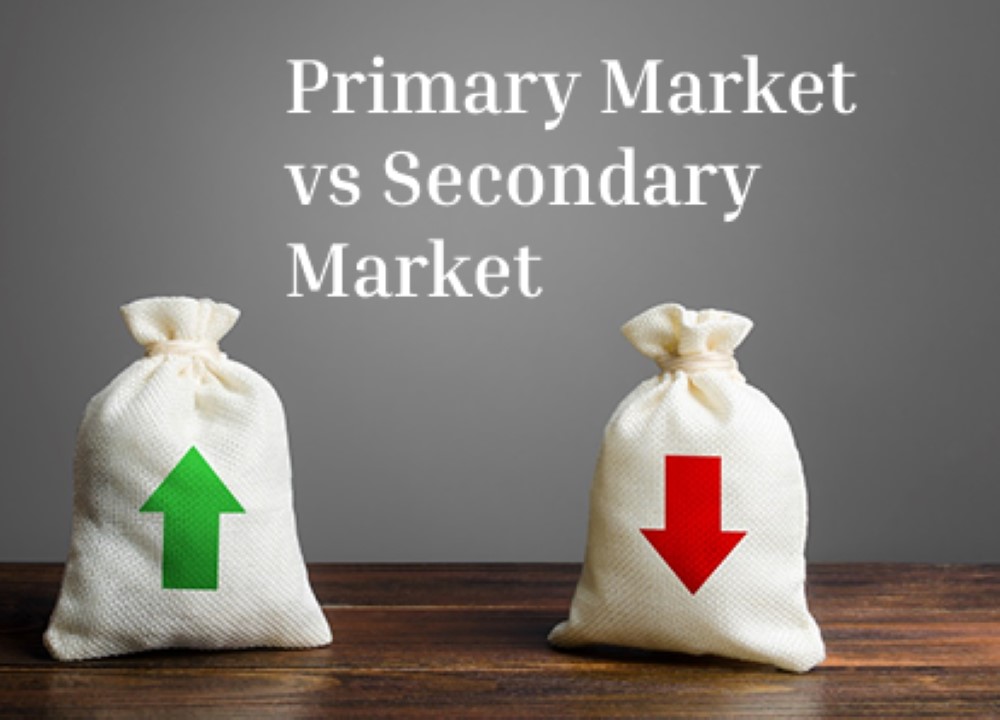Simplifying Life Insurance in India
Primary Market vs Secondary Market: What's the Difference?

Financial markets are the foundation of any economy. They allow for the movement of capital, enable businesses to grow, and allow investors to earn returns. Among different types of markets, primary and secondary markets serve essential purposes.
The primary market is where new securities are created. The secondary market is the one where securities are traded after they have been created. Understanding the difference between the primary and secondary markets is essential for investors, businesses, and policymakers. Read on and unveil those differences.
Quick Summary
Pro Tips
- Primary markets are new issue markets where companies and governments issue new securities (stocks, bonds, etc.) through IPO, rights issues, etc.
- Secondary markets are after-market where investors buy and sell issued securities among themselves.
- Primary markets raise capital for issuers; secondary markets provide liquidity and establish real-time pricing through investor demand.
- In primary markets, prices are set through book-building or fixed issues; in secondary markets, prices float based on real-time supply and demand.
- The primary market carries higher risk and lower liquidity (e.g., lock-ins). The secondary market tends to have lower risk, high liquidity, and easier entry/exit.

Table of Contents

What are Capital Markets?
Capital markets are financial systems for long-term financing transactions, including the buying and selling of stocks and bonds. They are essential for economic stability and expansion by allocating and directing savings into productive investments. There are two types of capital markets:
- Primary Capital Market: This is where capital is raised by selling newly issued securities (usually in the form of an IPO).
- Secondary Capital Market: It deals with trading existing securities among participants.
What is the Primary Market?
The primary market, often called the new issue market, is where companies and governments fund themselves by selling new securities. It is an essential part of capital formation, as it allows companies or governments to obtain funds.
In the primary market, securities are offered directly to investors, usually through an initial public offering (IPO) or private placement. The primary market is critical for an economy's economic well-being, as it provides a pathway for mobilising savings into productive investments.
What is the Secondary Market?
The secondary market, also known as the "stock market" or "aftermarket," is where investors buy and sell existing securities. It is different from the primary market. In the primary market, the issuing company raises funds. However, the issuing company does not get any funds in the secondary market.
For example, the New York Stock Exchange (NYSE) and the Nasdaq are secondary markets. The secondary market lets investors adjust their portfolios and respond to changes in market conditions.
Distinguish Between Primary Market and Secondary Market
The main differences between the primary and secondary markets are their functions, roles, and purposes. Here is a table outlining the differences among them:
Advantages of Primary Market vs Secondary Market
Investing in the primary and secondary markets offers different advantages to various investors. Several key advantages include:
Disadvantages of Primary Market and Secondary Market
Both the primary and secondary markets offer good investment chances, but they also come with downsides. The drawbacks include:
When Should You Choose the Primary Market and Secondary Market?
1. Choose the Primary Market When:
- You want to invest early in IPOs or a new bond.
- You want to seek long-term capital appreciation.
- You want to help a company grow, expand, or create new products and innovations.
- You want to diversify your holdings and purchase a new security.
- You will assume greater risk in exchange for a longer return wait.
2. Choose the Secondary Market When:
- You prefer to invest in an asset class with greater liquidity and ease of entry/exit.
- You want to invest in well-known companies or those with a strong track record.
- You trade often and respond to current market trends.
- You want to provide for change and flexibility in your portfolio.
- You want more advanced knowledge and unbiased market transparency for price discovery.
In summary, understanding the differences between the secondary and primary markets is essential for making smart investment choices. Knowing when and where to invest is key, whether you're a new investor or an experienced trader. It can impact your financial results and help you grow your stock portfolio and reach your long-term goals.
Disclaimer: The information provided on this website is for general informational purposes only and should not be construed as financial, investment, or legal advice. While we strive to provide accurate and up-to-date content, we do not guarantee the completeness, reliability, or suitability of the information for your specific needs.
We do not promote or endorse any financial product or service mentioned in these articles. Readers are advised to conduct their own research, consult with financial experts, and make informed decisions based on their unique financial circumstances. Any reliance you place on the information provided here is strictly at your own risk.
You May Also Like to Read
FAQs on Primary Market and Secondary Market
What role does the primary market serve in capital formation?
How does the secondary market facilitate liquidity?
Who are the primary market participants?
Who are the secondary market players?
How do investors benefit from the secondary market?
What are the risks of investing in the primary market?
How do secondary market transactions affect company finances?
What is the role of stock exchanges in the secondary market?
How can the primary market support economic growth?
What are the benefits of investing in the primary market over the secondary market?
In what way is price discovery facilitated in the secondary market?
Who regulates the primary and secondary markets?
How do market conditions impact issuances in the primary market?
What is the role of underwriters in the primary market?
Can investors use both primary and secondary markets for diversification?
How does the secondary market impact market volatility?
Which is more liquid: the primary market or the secondary market?
How does pricing differ between primary and secondary markets?
What is the difference between primary and secondary markets?
How does the primary market affect the secondary market?
Must-Read Articles about Stocks
Latest News
Read More




















